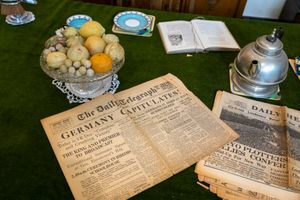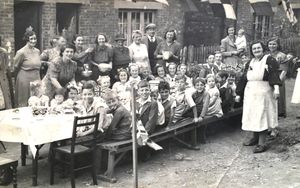Every year, the Mayor of Winchester is invited to choose artwork from the collections cared for by Hampshire Cultural Trust which are then displayed at City Space in Winchester Discovery Centre. This year, the current Mayor of Winchester, Cllr Eleanor Bell, selected works from the Hampshire County Council Contemporary Art Collection and Winchester City Council's Civic Silver Collection for the exhibition. With the lockdown in place, the Mayor's Choice Exhibition 2020 is presented virtually on Culture on Call, serialised in three episodes.

About the Contemporary Art Collection
The Contemporary Art Collection comprises nearly 400 works of modern and contemporary art, the majority of which are prints, photographs and paintings, with a small number of sculptural pieces.
Hampshire County Council began this collection over 20 years ago and it includes work by significant British artists such as Henry Moore, John Piper and David Hockney. Modern British prints make up just under 40% of the collection, including work by artists of national and international standing representative of significant movements in British modern and contemporary art. The paintings within the collection are an eclectic mix of oil, acrylic and watercolour and many are by artists living and working in Hampshire.
Alongside the paintings and prints, there is a small selection of three-dimensional works, including Hampshire Hog (1915) by nationally renowned artist Eric Gill and St Catherine's Hill, a bronze by Zoe de L'Isle Whittier.
Patrick Procktor RA, (1936 – 2003)
London Philharmonic Rehearsing, 1982
Aquatint
59 x 39 cm
Hampshire County Council Contemporary Art Collection AO2010.34
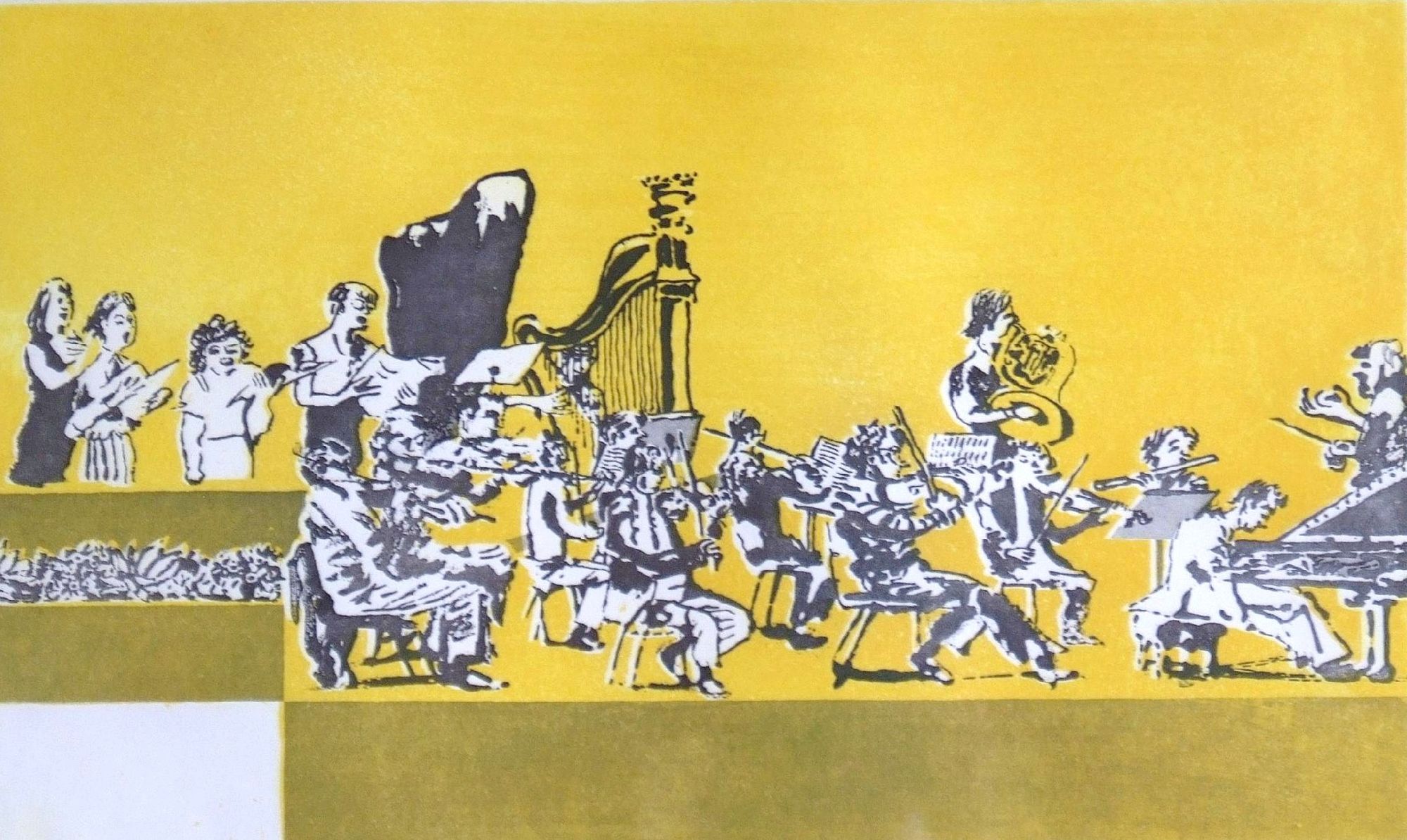
Patrick Procktor RA, (1936 – 2003)
Tenors of the London Philharmonic Choir Rehearsing, 1982
Aquatint
55 x 69 cm
Hampshire County Council Contemporary Art Collection AO2010.91
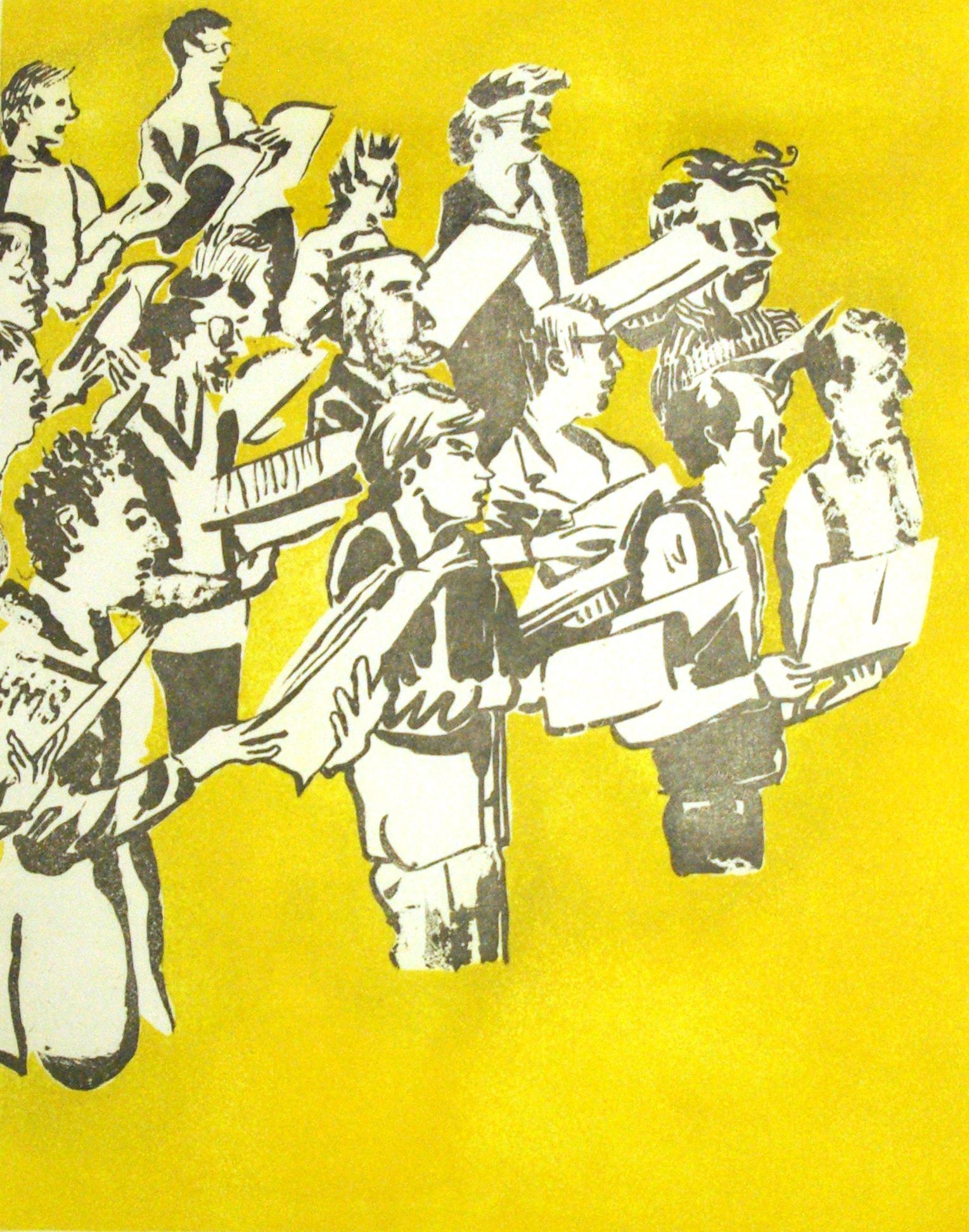
Patrick Procktor was an exceptional draughtsman, painter and print-maker. He was part of an influential group of British artists in the 1960s alongside David Hockney, before he established himself as one of the leading watercolourists of his generation.
Procktor was born on March 12, 1936 in Dublin and his early life was beset by poverty. When his father died the family moved to London in 1940 where his mother worked as a hotel housekeeper. In 1954, he was conscripted by the Royal Navy as a Russian–language student and after his demobilisation in 1956, he worked for the British Council as a translator.
Procktor studied at the Slade School of Fine Art (1958-1962) where he developed a dark, figurative painting style. His work was influenced by artists such as William Coldstream and Keith Vaughan, and his early paintings were dynamic, abstract depictions of the male nude.
Later his work became varied in subject and was frequently based on his extensive travels. It included landscapes, townscapes, figure compositions, portraits, interiors and even commissions for record sleeves such as the cover for Elton John's 1976 album, Blue Moves. Though Procktor worked with oils and acrylics, he also used watercolour extensively. He was close friends with David Hockney and his social circle included Derek Jarman, Francis Bacon, Cecil Beaton, Princess Margaret, and Mick Jagger.
Throughout his career he had a number of highly acclaimed shows and in 1996 he was elected a Royal Academician. However by then the glittering success he experienced in his earlier career had faded as he was struggling with depression and addiction. In 1999, a fire destroyed his Marylebone flat and much of his art. After brief spells of homelessness and imprisonment, his final years were spent painting simple still lifes in temporary council accommodation. He died on August 29, 2003.
Kathy Ramsay Carr, (1952)
Harmony West, 2004
Oil painting, on canvas 76 x 76 cm
Hampshire County Council Contemporary Art Collection AO2010.4
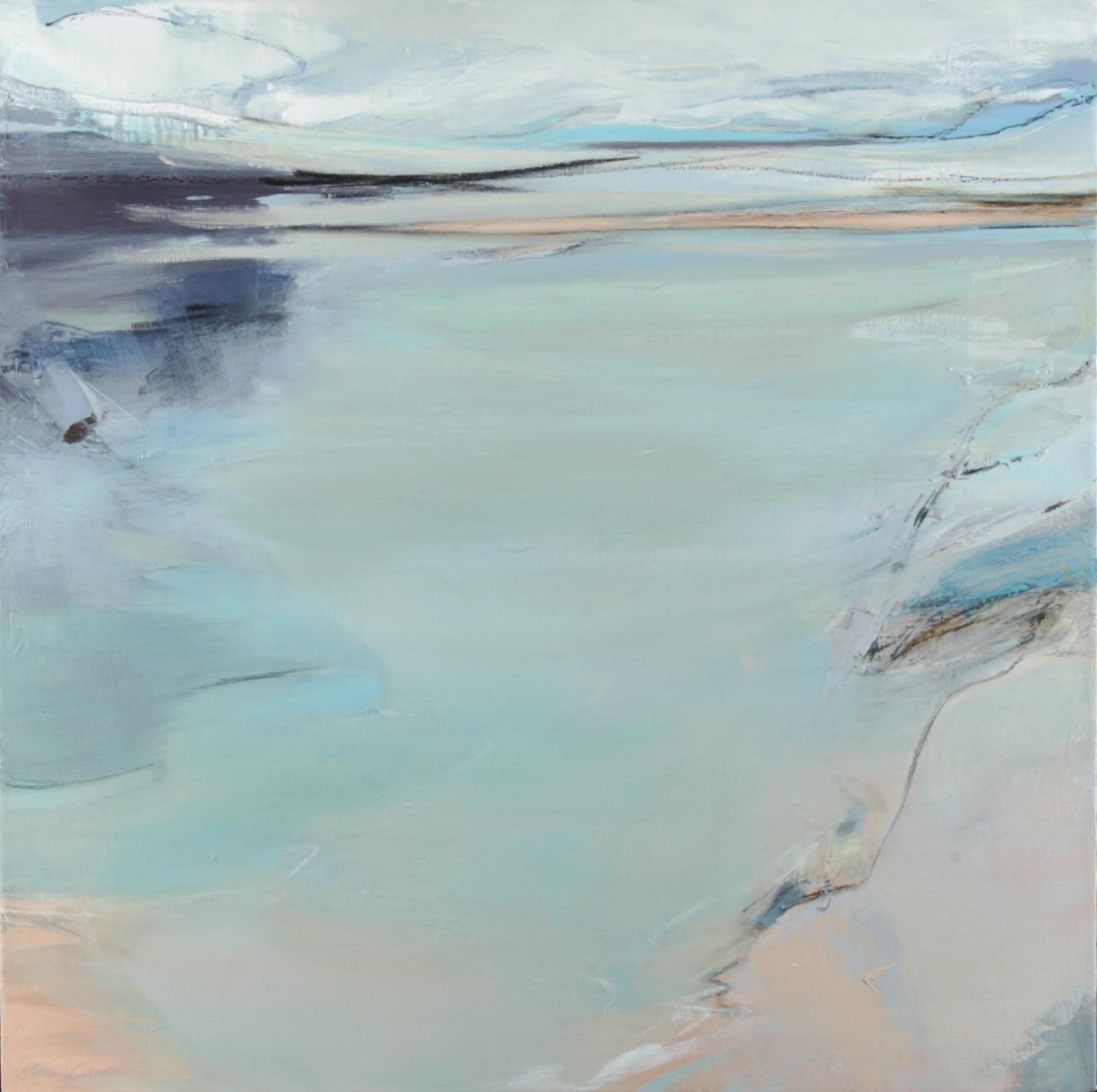
Kathy Ramsay Carr, (1952)
Sky Glass, 2004
Oil painting, on canvas
76 x 76cm
Hampshire County Council Contemporary Art Collection AO2010.3
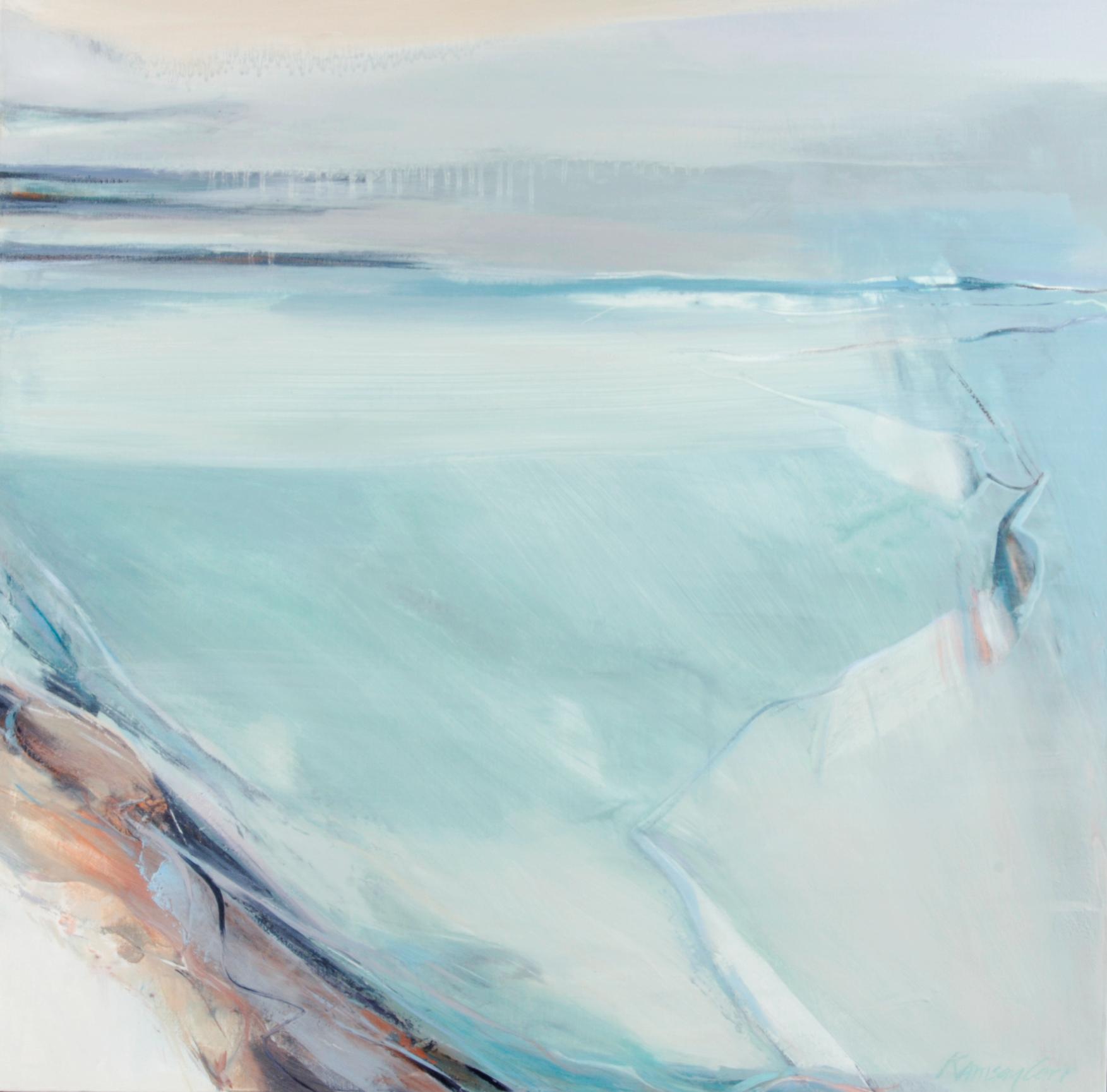
Kathy Ramsey Carr is an abstract landscape painter. Her paintings are about the relationship between earth, air and water, the spirit of nature and the extraordinary energy of the natural world.
Ramsay Carr was born in 1952 Gillingham, Kent, and spent most of her childhood in British Columbia. In 1975 she graduated from Bath Academy of Art Corsham in Graphic Design and Illustration. Later she travelled to Mexico where she worked for many years as Head of Design in the National University of Mexico. She began painting in the 90's.
As well as walking in Devon, she frequently visits North Cornwall, West Scotland and Wales for their rugged coastlines and spacious beaches that inspire her. Her paintings during these trips are a direct and instinctive response to the landscape.
Ramsey Carr uses linen and cotton canvas, oil paint mixed with glazes, plus mediums and impastos, to create translucent layers gradually strengthening the tones and depth required. Large areas of textural interest are created by working with palette knives. More recently she has been working with ink on paper, from sketches done whilst out walking.
Bridget Louise Riley CH CBE, (1931)
Bronze, 1978
Screenprint
83 x 55 cm
Hampshire County Council Contemporary Art Collection AO2010.29
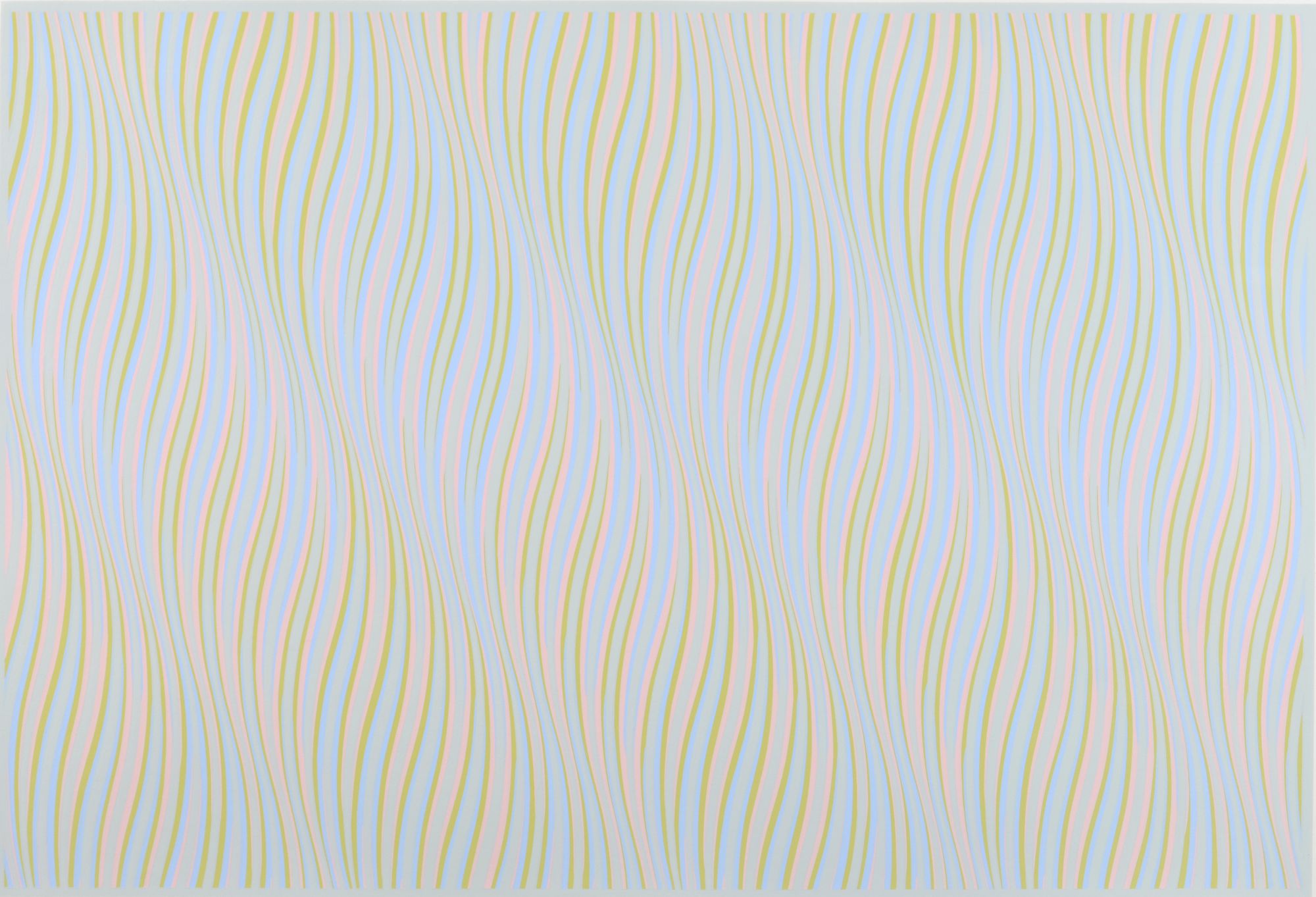
Bridget Riley is an internationally acclaimed painter, renowned for her dazzling and compelling abstract paintings which explore the fundamental nature of perception.
Riley was born on April 24, 1931 in London. Her father was conscripted into the army during the Second World War and her family was evacuated to Cornwall. She spent much of her time roaming the countryside and observing the natural world. According to Riley, these early experiences have strongly informed her artistic practice.
She studied at Goldsmiths' College (1949-1952) and at the Royal College of Art (1952-1955), but found her studies difficult and confusing. After college, she returned home to care for her father, but suffered a breakdown and struggled to paint. She moved to Cornwall to recuperate and was hospitalised for six months in London.
In 1956, Riley saw an exhibition of American Abstract Expressionist painters at the Tate, which inspired her to paint again. She worked as an illustrator at an advertising agency and taught at the Loughborough School of Art before moving to Hornsey School of Art (1960-61), and then to Croydon School of Art (1961-64). Her early work was figurative with a semi-impressionist style but soon moved to pointillism.
In the early 1960s she developed her signature Op Art stylewhich explores the interaction of shape, lines, and light and plays with the dynamic qualities of optical phenomena. She worked initially in black and white, occasionally introducing tonal scales of grey. In the late '60s, Riley introduced colour into her work and in the early 1980s began to explore colour and contrast. In 1968, Riley became the first British contemporary painter and the first woman to win the International Prize for Painting at the Venice Biennale.
Bridget Riley’s major paintings are very large and take six to nine months to develop. Everything is painted by hand by assistants, following Riley’s own working drawings, her precise colour swatches and instructions.
Kenneth Rowntree, (1915 – 1997)
Country Celebrations, 1953
Lithograph
43 x 31 cm
Hampshire County Council Contemporary Art Collection AO2010.101
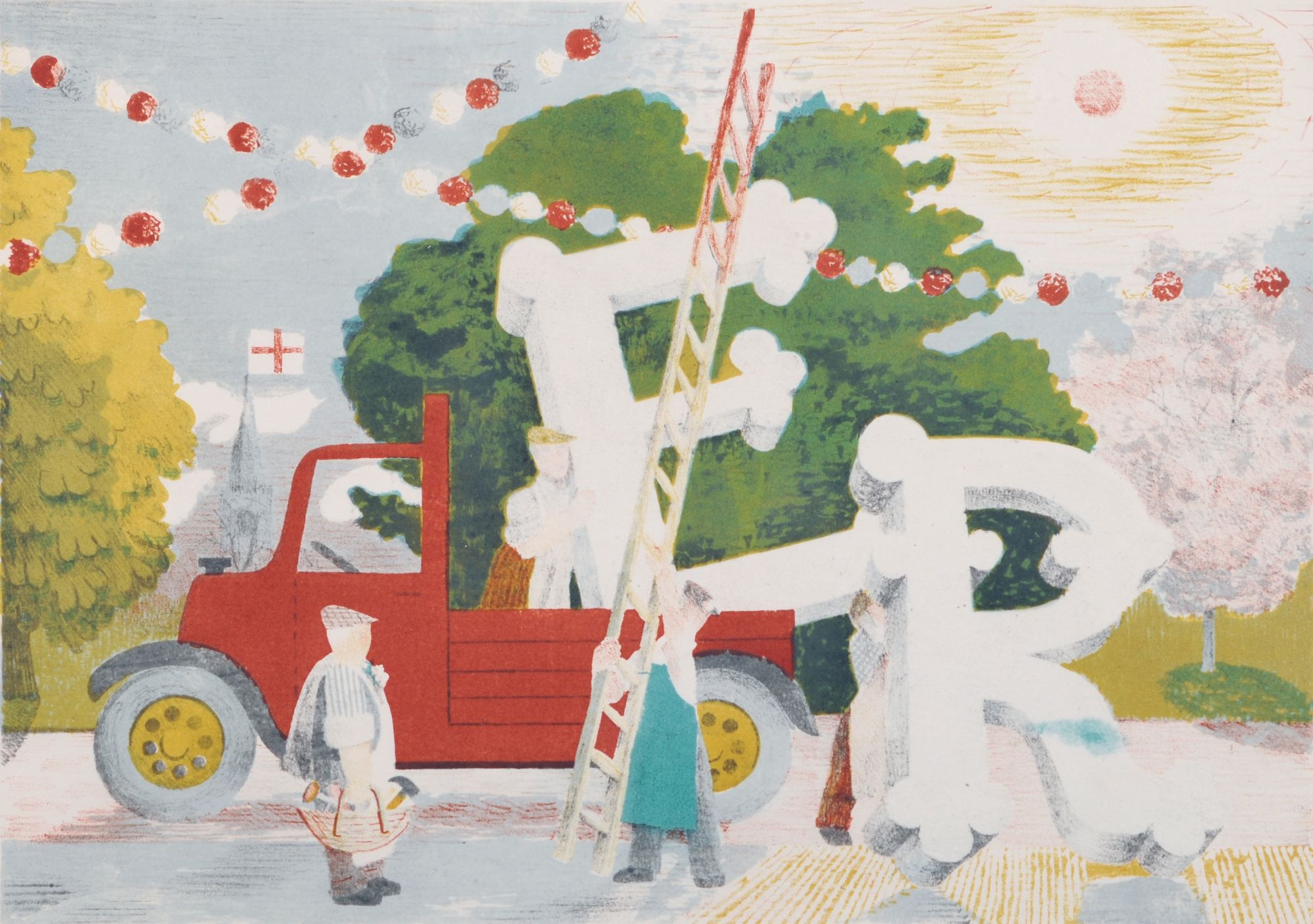
Kenneth Rowntree was an artist, designer and teacher and his extensive work included paintings, murals, book covers, posters, magazines and advertising. He is known for his neo-romantic landscapes and townscapes.
Rowntree was born on March 14, 1915 in Scarborough, Yorkshire. He was part of the extended confectionary Rowntree family. He studied at the Ruskin School of Drawing (1934-35) -where he was taught briefly by Eric Ravilious-, and at the Slade School of Fine Art.
As a Quaker, Rowntree was a conscientious objector. During the Second World War, he was an official War Artist. He participated in the ‘Recording Britain’ project that captured everyday life in wartime Britain before it changed by development or the war. Rowntree was a member of the artists’ community at Great Bradfield, Essex, which was home to a number of figurative artists, such as Bawden and Ravillious.
After the war, Rowntree joined the Royal College of Art as head of its mural painting studios. In 1951 he completed Freedom, a major mural for the prestigious Festival of Britain. Two years later he painted scenes along the processional route of the Coronation; the Queen has acquired some of his works.
From 1959 he was Professor of Fine Art at Newcastle University until his retirement in 1980. He became close friends with fellow teacher and painter Victor Pasmore, who at the time was exploring abstraction and constructivism, elements of which crept into Rowntree’s work.
Rowntree developed his own style of painting in which modernist space and traditional objects combine in appealing arrangements. He was a multi-faceted artist and in his studio, neo-Romantic images jostled for attention with sunny landscapes, designs for Vogue covers and hard-edged abstracts.
He died in Hexham on February 21, 1997.
Episode three will be published on 13 May.
If you have enjoyed Culture on Call and you are able to make a donation, any support you can give will help us keep people connected.


